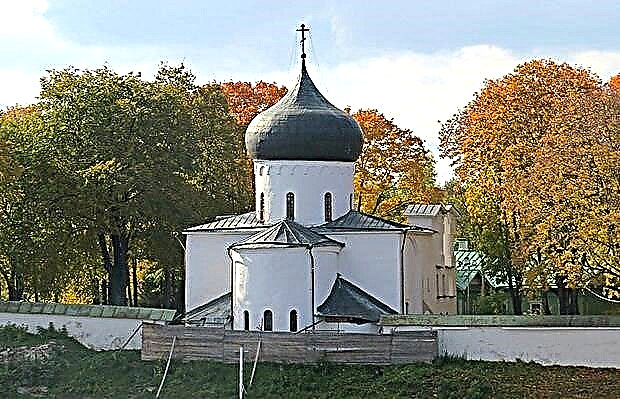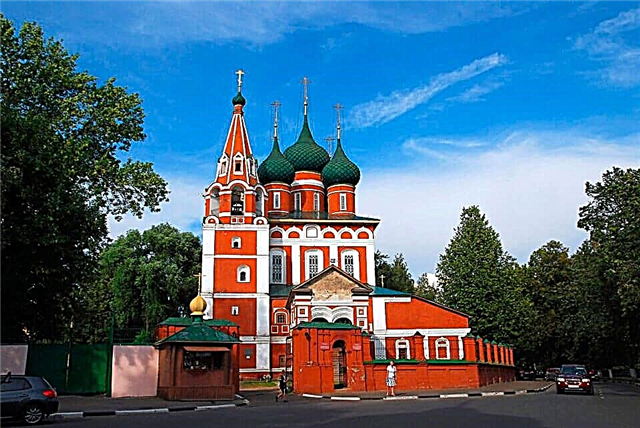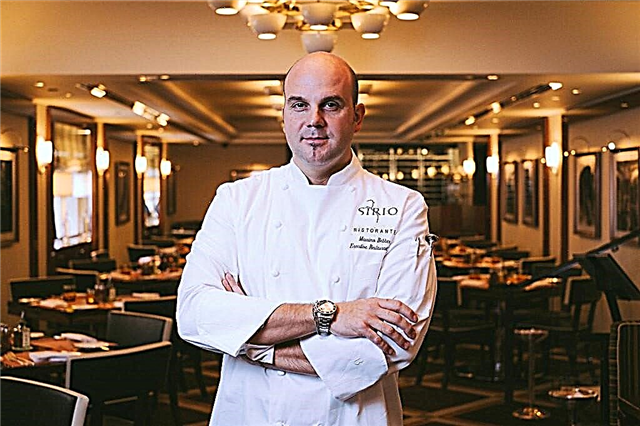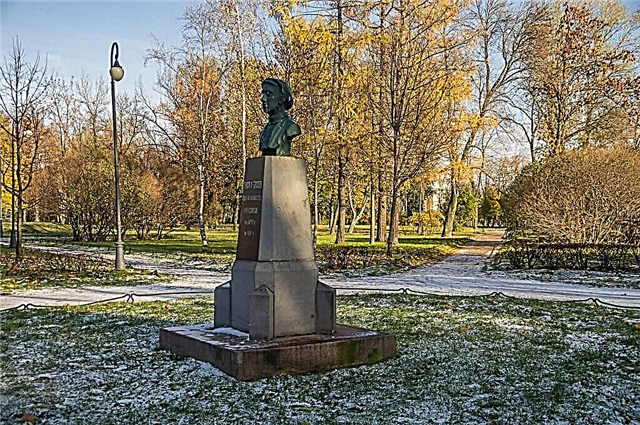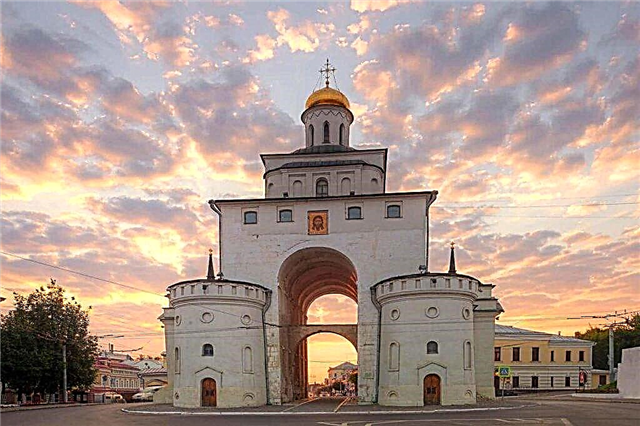The ancient Russian city is located east of Moscow. It attracts tourists with its unique atmosphere, ancient monuments, numerous mysteries. Vladimir's museums perfectly reflect his spirit and are somewhat reminiscent of a patchwork quilt. Private and public assemblies are different on topics, but they all create a single harmonious space.
Museum complexes, sites with exhibits in the open air, like the city itself, are cozy. You can stay in them for hours, admire rarities, enjoy special peace. Many exhibitions in Vladimir are open in buildings that have been assigned the status of historical, architectural monuments, World Heritage sites. This "unity of form and content" gives amazing impressions to children and adults, leaves a bright mark in the soul after visiting the sights.
Exposition "Old Vladimir"

Placement of exhibits: an old water tower, built at the beginning of the last century. By its architecture, it resembles a part of the castle transferred by some miracle from fantasy books, paintings, films. Its neo-Russian style, external structure, in its laconicism echoes with fortifications. In the halls of the exposition, you can learn a lot of interesting things about how the city lived before the revolution, which worried and delighted residents.
With the help of 800 exhibits, historians managed to recreate the interiors of a tavern, a pawnshop, and a rich city house. The exposition contains old photographs of streets, temples, famous local residents, authentic antique handmade icons, pre-revolutionary magazines, books, newspapers. There is an observation deck on the roof of the building.
Golden Gate

The object is part of the Vladimir-Suzdal Museum-Reserve. The gate is included in the list of UNESCO World Heritage Sites and is one of the visiting cards of the region. There is a church in the upper part of the 20-meter building. It's hard to imagine, but once there were 6 similar gates in the city, created by princely masters in the same style. Fires, wars have repeatedly changed the appearance of the only surviving building. It survived miraculously.
A visit to the Golden Gate provides an opportunity to get acquainted with the external and internal parts of the ancient monument. A military-historical exposition has been opened in the building of the church. Its main rarities: samples of weapons, awards, banners, trophies, personal belongings, portraits, photographs of heroes of different wars.
The gilded (according to another version: completely gold) gates, thanks to which the landmark got its name, have not yet been found. Most likely they were drowned in the Klyazma River 800 years ago or are safely stored in an ancient cache.
Museum Center "Chambers"

The complex is a structural subdivision of the Vladimir-Suzdal Museum-Reserve. The Center occupies a place in the Public Places building. It will be interesting to see the huge house between the cathedrals, first of all, for those who are interested in the history of architecture, the work of the last Baroque master and the first genius of Russian classicism, Karl Blanc.
The building is 100% an example of the classic style. Its exterior is completely devoid of the slightest hint of eclecticism. One of the most famous landmarks of the complex: the main staircase. This structural unit of the museum-reserve is interesting because it closely cooperates with foreign private collectors.
Exhibitions of many rarities here become events of a global scale. There are 3 permanent exhibitions in the center. One of them is aimed at a children's audience. The art gallery with canvases by prominent Russian artists is the main pearl of the collection. In the chambers, the atmosphere of the noble houses is so faithfully recreated that large, small visitors to the exhibitions have the feeling of traveling in a time machine.
Historical Museum

This part of the Vladimir-Suzdal Museum-Reserve is also located in an old building. The majestic house was built on the border of the XIX-XX centuries. It was originally intended for an educational institution, library, archive, museum. The building seems to be much older, because it was built in the pseudo-Russian style.
During its internal, external examination, you can find a lot of unusual architectural elements. All expositions of the complex are dedicated to the history of the Vladimir region. Especially there are many rarities, reminiscent of the period when the princes ruled. The museum atmosphere can be safely called fantastic.
Mirrors are installed in the corners of the premises, the combination of the play of light, theatrical elements creates the effect of complete immersion in the medieval atmosphere. An ancient Orthodox cross, a collection of jewels of a city woman (her decorations were created by craftsmen almost 800 years ago) are the most famous exhibits of the art object.
Crystal and Glass Museum

Inspection of the collection on the territory of the Trinity Church can be easily combined with the study of interesting design elements of this building. It was built shortly before the revolution with donations from Old Believer merchants. The church in the pseudo-Russian style is magnificent, it is somewhat reminiscent of the Moscow GUM. Cross masonry was used in the construction of the temple.
If we exclude the religious interpretation of construction technology, the following fact attracts attention: it is precisely this arrangement of bricks that gives the buildings maximum reliability that they can withstand even strong earthquakes, direct weapons strikes. The first museum exhibition will soon celebrate its 50th anniversary.
Unique objects made of crystal, glasses are arranged in a very original way. The light pouring from the stained-glass windows, the correctly installed illumination, the mirrors give them a shine. Things, accessories, glassware, crystal were created by masters of different generations, but all the exhibits look harmoniously together despite the difference between color solutions, styles, manufacturing technologies.
Dmitrievsky Cathedral

There is a version that the building was erected 800 years ago on the personal order of the legendary prince Vsevolod the Big Nest. The ruler went down in history as a loving father with many children, a talented military leader, and a far-sighted politician. His reign was a golden age for the region. It is this thought that comes when looking at the building, which is now included in the UNESCO World Heritage List.
The white-stone temple from the outside is decorated with skillful carvings. It is symbolic that on its facade there is an image of the biblical king David. The church looks majestic at any time of the day, it reminds of the former might of the Vladimir-Suzdal principality. Regular services are not held in the temple, so there is an opportunity to slowly examine the details of the interior decoration.
On the second and upper tier of the church there are 1,000 carved stones decorated with figures of plants, birds, animals, fictional, real heroes. It is a pity that some of its exhibits have been replaced with replicas due to the threat of vandalism! An interesting fact: in Russia they knew very well about the ancient heroes - on the walls of the Vladimir Christian church you can see the image of Alexander the Great.
Assumption Cathedral

The white-stone temple - the brainchild of Lombard craftsmen - is called one of the hallmarks of the city and the region. Not only UNESCO has recognized the value of the building, including it on the list of World Heritage Sites. History did it. The temple became a standard for many centuries for Russian craftsmen who erected Orthodox churches in different parts of the state.
The cathedral dates back to the middle of the 12th century.Fragments of frescoes created by icon painters canonized as saints have survived to this day: Daniil Cherny, Andrei Rublev. The height of the cathedral is over 30 meters. Its decoration is striking in its splendor, but one must take into account: interior elements made of precious metals, precious stones, rare wood species have been read for only a few hundred years.
The two-level temple was repeatedly rebuilt, restored after wars and fires. Little has remained of the original appearance of the building. However, as a result, it has become even more unique, combining different decorative elements.
The mix of style solutions only strengthened the overall harmony of the buildings. The utensils collected here were made during the reign of the Romanov dynasty. Orthodox pilgrims from all over the world strive to visit the temple for the sake of participating in divine services, worshiping the miraculous icon of the Vladimir Mother of God, the relics of Russian saints.
Forge-Museum of the Borodins

A unique place on the map of the Vladimir region, Russia is often called a living monument to an ancient craft. The forge is active. Within its walls you can see the process of making various products by craftsmen: from figurines for decorating interiors to nails, souvenirs, household utensils. Ancient secrets and technologies of Russian forging are carefully kept in the smithy.
At the same time, the forge-museum plays the role of a cultural, educational center, where children and adults learn to create iron products. There is always a whole queue to attend master classes. In the homes of many visitors to the museum, the nails forged in the workshop are prominently displayed. There are no guides in it in the usual sense.
All the exhibits are shown by the blacksmith, he also tells about the history of the amazing place. Nice bonus: all things are allowed to be touched. And one more thing: here it is possible to hold a wedding ritual according to ancient rituals, because in Russia they believed that a blacksmith is able to forge family happiness for newlyweds.
Old pharmacy

The city landmark is located in the historical part of the regional center. In total, she worked for two centuries. The building has survived wars and revolutions. Today it is hard to believe that it was intended specifically for the storage and sale of medicines, because in its splendor it is more reminiscent of a noble mansion. In the new century, the old pharmacy found a second life: it turned into a museum. It will be interesting to visit for everyone who is interested in the history of pharmaceuticals.
In the pharmacy, specialists conduct individual, group excursions. The exposition is devoted to the technologies for the manufacture of medicines. Its oldest rarities are about 200 years old. The furnishings in the rooms are original. They give visitors an insight into the daily life of pharmacists. Master classes are held regularly in the building. It has a gift shop.
Lights of Vladimir

The facility is located in the very center of the city, it specializes in interactive excursions and is part of the Eureka entertainment complex. This is another amazing place in the regional center, where you can easily travel to different eras, get in touch with the life of representatives of different classes, including nobles, merchants, and bourgeois.
The history of lighting in its antiquity exceeds the age of any architectural monuments. Fire was a source of worship for ancient people. They brought sacrifices to him, prayed for the welfare of loved ones and punishment of enemies. Here you can learn a lot of interesting things about lighting technology.
Over the past centuries, they have gone from torches to elements of the "Smart House" system. The exhibits are old household items - visitors are allowed to touch them with their hands. The complex regularly hosts master classes on making, decorating candles, painting gingerbread, light painting, and three-dimensional graphics. Due to the high popularity of events and expositions, the management of the complex recommends that visitors sign up for excursions and training sessions in advance.
Spoon Museum

Cutlery was and remains a symbol of well-being and wealth. Today, the presence of sets of various spoons in the apartment, house will not surprise anyone. But once a person came to visit with his spoon wrapped in a clean rag. And this was considered the norm of behavior.
Spoons in Russia, like tables, were called God's hands. To this day, a huge number of all kinds of subject, superstitions are associated with them. Visitors to the museum will learn more about them, where unique items for table setting, created in different parts of the world, are kept.
It is noteworthy: a special attitude towards spoons can be traced among various peoples. On Egyptian cutlery, for example, gods are depicted. For those who are interested in the history of the Scandinavian countries, it will be interesting to look at the Viking spoons with runic symbols.
A significant part of the museum exhibits are made of silver. Many things exist in single copies. In total, the collection contains 20 thousand items, including those that previously belonged to the imperial dynasty of the Romanovs.
Gingerbread House Museum

Favorite by children and adults, this delicacy traces its history back to ancient times. The art platform was created to preserve unique technologies, recipes for baking gingerbread from natural products. The museum and entertainment complex is called a tasty urban brand. It is never boring here.
The complex is not 10 years old, but it is very popular with tourists of all ages. It can also be compared to a huge photo zone, where the ideal semi-legendary atmosphere of pre-revolutionary Russia is recreated. The entire staff of the complex is dressed in bright folk costumes, sewn according to the samples depicted on ancient engravings.
Visitors can take pictures in bright elegant clothes, plunge into the atmosphere of Russian holidays, whose attributes were and remain delicious gingerbread. The house for children and adults hosts master classes on creating gingerbread houses, baking, painting gingerbread, making dolls, toy whistles.
Museum "Our military childhood"

A touching piercing exposition recreates the life of the fateful 40s of the last century. Numerous enthusiasts collect items for her all over Russia. The initiator of the creation of the site: the regional organization "Children of War". Behind every object in the museum are the fate of children whose lives were crippled by the war. All interior items, books, dishes, clothes in its premises are genuine.
Of particular value are the newspapers located in the premises, on whose pages are depicted rural workers, leaders of production, polarians, and pilots. It was on them that the representatives of the younger generation were equal then. Silence reigns in the halls here, interrupted only by excursions. The owners of many things are not alive, and the items remained as a memory of them and their hungry, destitute wartime childhood.
Museum of Science and Human Eureka

The entertainment complex is considered by the townspeople and tourists to be one of the best places for family vacations. Such establishments are usually built in metropolitan areas. Vladimir became an exception to the general rule. A huge interactive exposition is dedicated to the achievements of various fields of science and technology.
The main value of visiting a scientific and educational center: new practical knowledge. Mechanisms are allowed to touch, turn on and off, experiment with them. This is how children learn better knowledge of physics, chemistry, optics, mechanics. They turn into real discoverers, learn a lot of interesting, important things about the world around them.
The scientific and educational center constantly hosts master classes for all ages. A store of educational toys is open in it, large-scale children's parties are held. Experts have developed interesting excursion programs for young people. The center is actively pursuing career guidance activities.
Museum of designer dolls and bears Teddy

Adults love toys as much as children. It's just that fathers, mothers, grandfathers, grandmothers, older brothers and sisters in their daily hustle and bustle forget about the happiness that dolls and teddy bears once gave them. A unique collection can be viewed in the city center and enjoy the amazing sensation of returning to the land of childhood dreams.
The museum was created by Marina and Vasilisa Chirkov. He is young, but known far beyond Russia. Mom and daughter make dolls for private collectors, strive to preserve the unique technologies of making toys from safe natural materials.
They turned their hobby into a profession, a source of income. The Chirkovs performed a real miracle: the idea of an ordinary exhibition was transformed into the concept of a unique art space that attracts people from different parts of the world.
Center of Fine Arts

The establishment is located in a house where, according to local legends, ghosts live. It is difficult to ignore the facts that visitors periodically see the spirit of Dolgorukova in the building and hear ancient music and the stamping of feet coming out of nowhere. Even opponents of the mystic admit the existence of eerie anomalous phenomena. The building was built more than 200 years ago, its inhabitants changed, but it was almost always associated with the world of beauty.
The Regional Center for Fine Arts will soon be 30 years old. “Novosel” probably liked the ghosts, because many artists, photographers, sculptors manage to receive interesting offers from foreign museums and non-standard orders after exhibitions in a haunted house. The main part of the exhibition is made up of works by local craftsmen. The Fine Arts Center is a popular venue for music festivals.
Museum-tale of Babusya-Yagusya

The entertaining mini-complex works in an interactive format. Its history began with a gift and souvenir shop. The trading floor is open to this day, tourists tend to buy beautiful things in it as a keepsake of visiting the city.
All products offered in it are created by craftsmen. This also contributes to the amazing atmosphere of a private fairy tale museum. The entrance to it cannot be confused with anything. It resembles the facade of Baba Yaga's hut ... This is how it is portrayed by Russian folk tales.
The mini-complex occupies 3 rooms. All of its exhibits are allowed to be touched. Numerous guests of the fairy-tale world adore using Yaga costumes, taking selfies against the background of the characters. The Serpent-Gorynych looking through the window looks very authentic. He either smiles sweetly, or ponders how best to bite visitors.
Figures of goblin, kikimor, various nightmares reinforce the impression of the reality of what is happening. Chained Koshchei is not bored here in captivity. He condescendingly looks at how the guests examine the figures of Yaga and her relatives: lovely and frankly scary witches, fly agarics, and other representatives of the local, foreign evil spirits.


